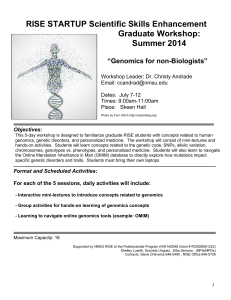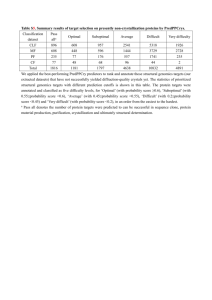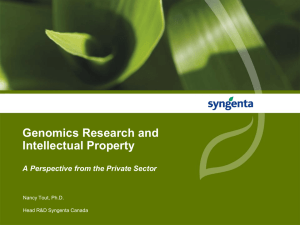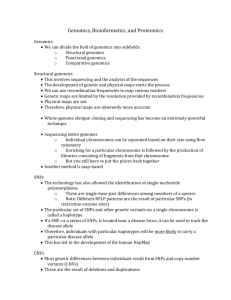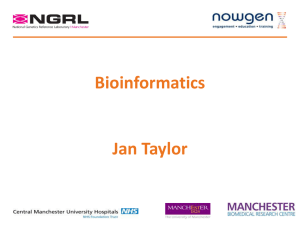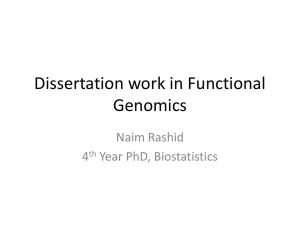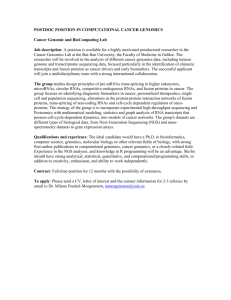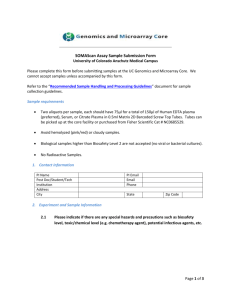Draft Syllabus for Statistical Genomics
advertisement
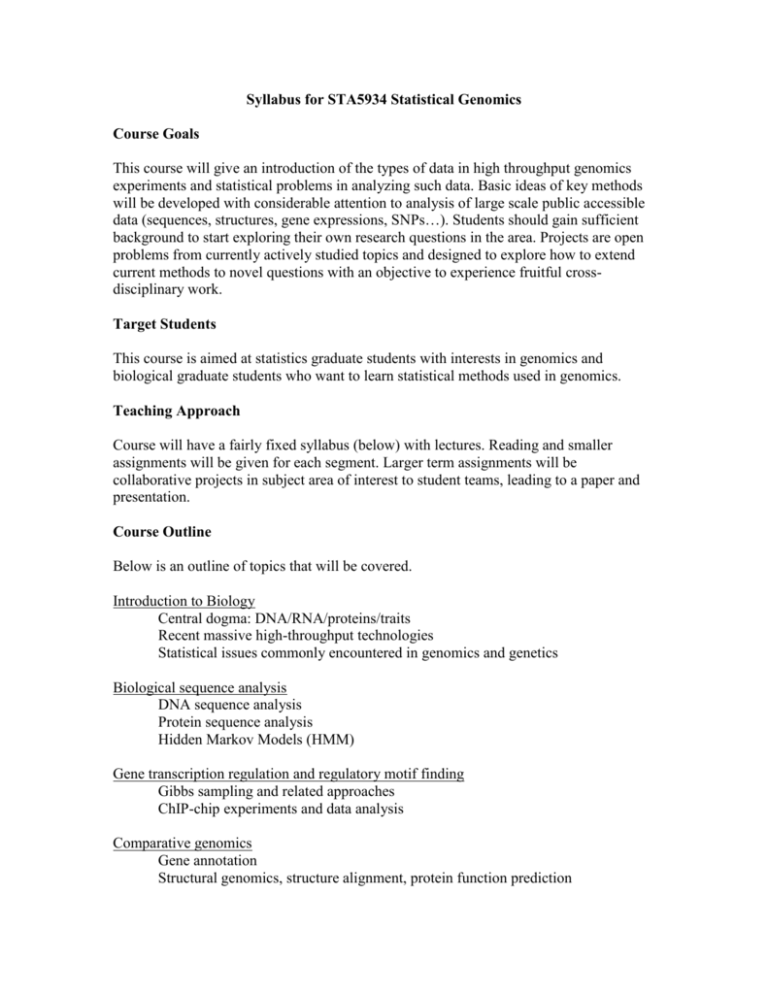
Syllabus for STA5934 Statistical Genomics Course Goals This course will give an introduction of the types of data in high throughput genomics experiments and statistical problems in analyzing such data. Basic ideas of key methods will be developed with considerable attention to analysis of large scale public accessible data (sequences, structures, gene expressions, SNPs…). Students should gain sufficient background to start exploring their own research questions in the area. Projects are open problems from currently actively studied topics and designed to explore how to extend current methods to novel questions with an objective to experience fruitful crossdisciplinary work. Target Students This course is aimed at statistics graduate students with interests in genomics and biological graduate students who want to learn statistical methods used in genomics. Teaching Approach Course will have a fairly fixed syllabus (below) with lectures. Reading and smaller assignments will be given for each segment. Larger term assignments will be collaborative projects in subject area of interest to student teams, leading to a paper and presentation. Course Outline Below is an outline of topics that will be covered. Introduction to Biology Central dogma: DNA/RNA/proteins/traits Recent massive high-throughput technologies Statistical issues commonly encountered in genomics and genetics Biological sequence analysis DNA sequence analysis Protein sequence analysis Hidden Markov Models (HMM) Gene transcription regulation and regulatory motif finding Gibbs sampling and related approaches ChIP-chip experiments and data analysis Comparative genomics Gene annotation Structural genomics, structure alignment, protein function prediction UCSC genome browser Single-nucleotide polymorphism (SNP) and association studies High throughput -omic data analysis including Microarray data analysis Normalization/pre-processing and data smoothing Multiple testing and false discovery rates Machine learning Discriminant gene analysis Analysis for emerging biotechnological -omic experiments ChIP-chip, expression tiling, CGH, CSI Gene selection and grouping Biological Networks Gene regulatory networks Other biological networks such as metabolism networks, protein-protein interaction networks Phylogeny & Trees Projects In each project, students will review current literature, propose their own approach to the problems, work on the project, and present the result of their work. Project 1. Epitope-Antibody Recognition (EAR) Challenge http://wiki.c2b2.columbia.edu/dream/index.php/D5c1 Project 2. Network Inference Challenge http://wiki.c2b2.columbia.edu/dream/index.php/D5c4 Tentative Schedule Week 1 (8/23) 2 (8/30) 3 (9/06) 4 (9/13) 5 (9/20) 6 (9/27) Tue Lecture Introduction to Biology I Thu Lecture Sequence Data Analysis - Dynamic Programming HMM I Project I Literature review Labor day HMM II HMM III Regulatory motif finding Project I Proposal High-throughput experiment Microarray Data Analysis I Microarray Data Analysis II 7 (10/04) 8 (10/11) 9 (10/18) 10 (10/25) 11 (11/01) 12 (11/08) 13 (11/15) 14 (11/22) 15 (11/29) 16 (/) Microarray Data Analysis III Microarray Data Analysis IV Project I presentation Project I presentation Bayesian Networks Bayesian Networks Association studies Association studies Association Studies Protein Structure Comparison and Alignment Project II Literature review and Proposal Project II Literature review and Proposal Protein structure prediction Comparative Genomics, Structural Genomics, Function Prediction Biological Networks Thanksgiving Project II Presentation Project II Presentation
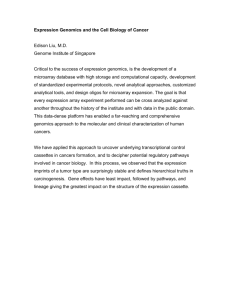
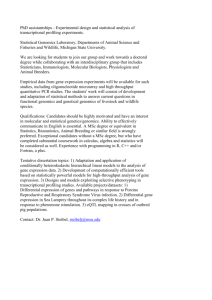
![9_Komlenac - start [kondor.etf.rs]](http://s2.studylib.net/store/data/005352037_1-bdc91b0717c49a75493200bca431c59c-300x300.png)
